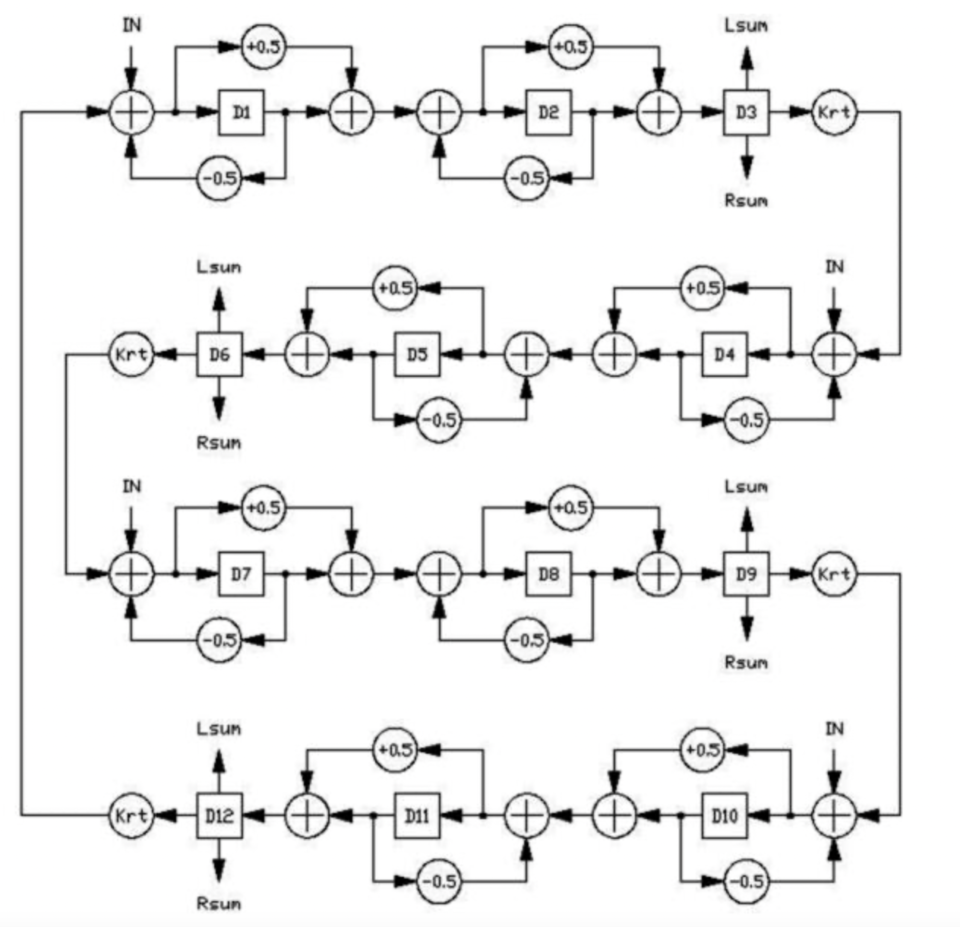Subtotal: $50 USD
Getting Started With Reverb Design, Part 3: Online Resources

There are many online resources available for people interested in reverb design. Here are a few of my favorites:
The Spin Semiconductor website
In the late 2000s, Keith Barr (of MXR and Alesis fame) and Frank Thomson formed a company focused on their new chip design, the FV-1. This chip has a fairly simple architecture but can be programmed to make excellent effects and currently powers a ton of boutique reverb and delay pedals. The Spin Semiconductor website has a wealth of information about using the FV-1, including some “informal notes” that provide one of the best walkthroughs of allpass loop reverbs ever. I would recommend picking up the FV-1 Development Kit and loading up all the example algorithms from the Spin Semiconductor website to see how they work, as these examples greatly expand upon the basic allpass loop concepts.
Theory and Techniques of Electronic Music by Miller Puckette
Puckette has been designing reverbs since the early 80s when the Stautner/Puckette algorithm was published in the Computer Music Journal. His online textbook is an embarrassment of reverb design riches, as well as musical DSP in general. Puckette has an excellent explanation of how feedback delay networks work, as well as going into depth on the use of rotation matrices in reverb design and how rotation matrices correspond to allpass delays. The primary reverb example uses both a feedforward unitary delay network for early reflections and a feedback delay network for late reverb. The Pure Data examples have several more explorations of FDN designs.
Physical Audio Signal Processing by Julius O. Smith
Smith has been publishing interesting reverb topologies since 1985, and this online (& physical) book is a great overview of his work. Smith goes into depth about comb and allpass delays, feedback delay networks, waveguide reverbs, and the various equivalences between these methods.
Digital Audio Effects (DAFX) Conference
The Digital Audio Effects (DAFX) conference has been held every year since 1998, and the proceedings from the conferences are a treasure trove of modern reverb research. Not all of the links are working on the page, but it is entirely worth tracking down EVERYTHING published at these conferences and giving it a read, or at least a glance (lots of good non-reverb papers).
The Journal Of the Audio Engineering Society E-Library
Normally I wouldn’t want to recommend a source behind a paywall, but there are tens of thousands of amazing papers here, dating back to the 1950s.
Your local university library
OK, that doesn’t seem like an online resource, but hear me out. There are a lot of important reverb articles that have been published in journals like the Journal of the Acoustical Society of America, the IEEE, and the Computer Music Journal. Buying articles from these journals individual is expensive. However, odds are high that your local large research university subscribes to these journals, and has access to these online archives through their library system. For the past 15 years, I’ve walked to the University of Washington with a USB stick, sidled up to one of the public access terminals, plugged in a USB stick, and looked up and downloaded the papers I need. I’d highly recommend looking into the public research facilities in your area!
 Valhalla Room
Valhalla Room 




Thank you for writing this series! These are great resources.
I’ve played around with reverb design in pure data (with a lot of info from your previous posts).
I’ve had some good sounding results, but end up having so many parameters (and so many possible architectural variations) that it can be quite overwhelming to try and tune them (especially if they are effected/interact with other user controlled parameters). I would love if you covered strategies for situations like this!